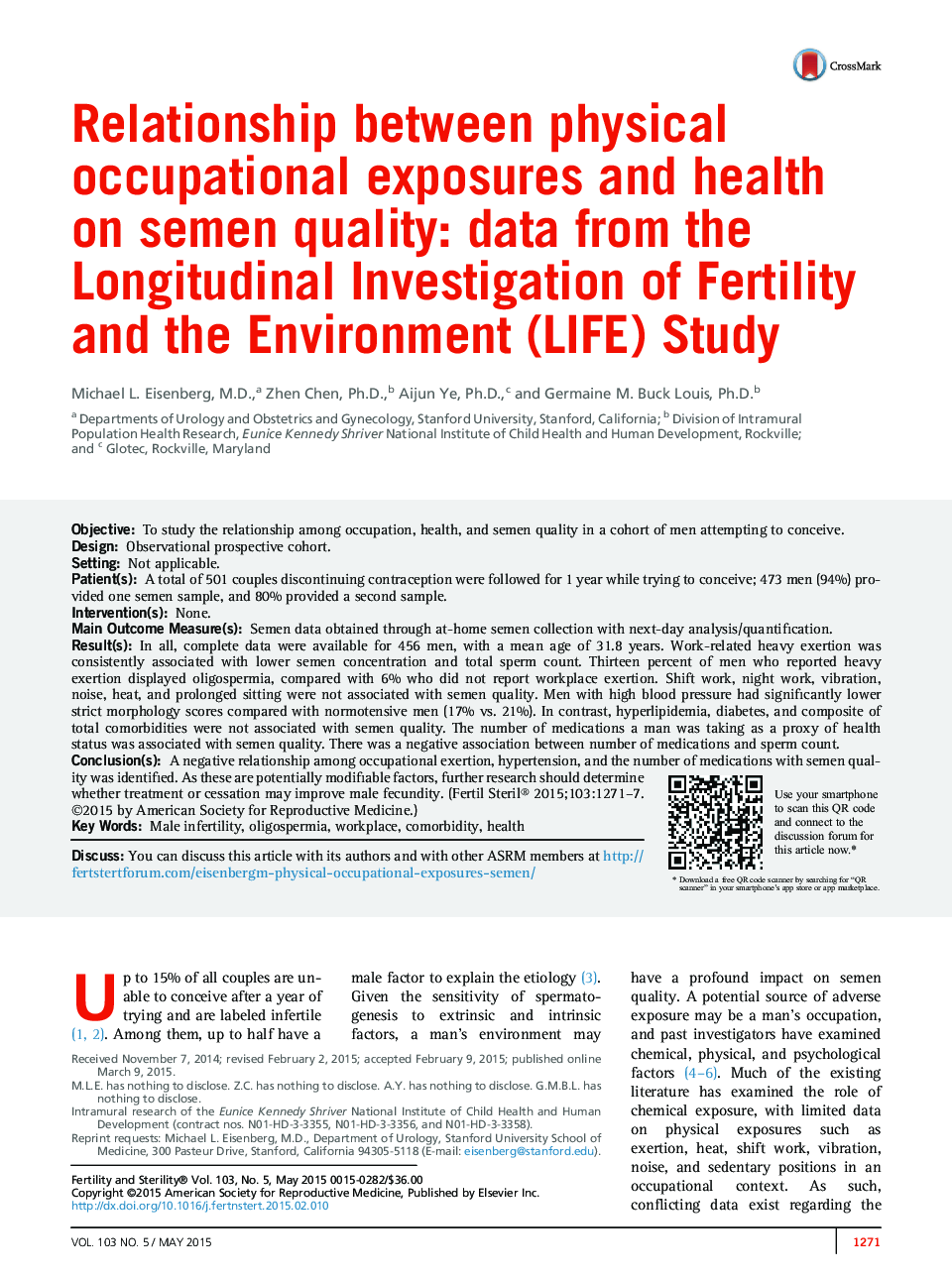| کد مقاله | کد نشریه | سال انتشار | مقاله انگلیسی | نسخه تمام متن |
|---|---|---|---|---|
| 3930845 | 1253275 | 2015 | 7 صفحه PDF | دانلود رایگان |

ObjectiveTo study the relationship among occupation, health, and semen quality in a cohort of men attempting to conceive.DesignObservational prospective cohort.SettingNot applicable.Patient(s)A total of 501 couples discontinuing contraception were followed for 1 year while trying to conceive; 473 men (94%) provided one semen sample, and 80% provided a second sample.Intervention(s)None.Main Outcome Measure(s)Semen data obtained through at-home semen collection with next-day analysis/quantification.Result(s)In all, complete data were available for 456 men, with a mean age of 31.8 years. Work-related heavy exertion was consistently associated with lower semen concentration and total sperm count. Thirteen percent of men who reported heavy exertion displayed oligospermia, compared with 6% who did not report workplace exertion. Shift work, night work, vibration, noise, heat, and prolonged sitting were not associated with semen quality. Men with high blood pressure had significantly lower strict morphology scores compared with normotensive men (17% vs. 21%). In contrast, hyperlipidemia, diabetes, and composite of total comorbidities were not associated with semen quality. The number of medications a man was taking as a proxy of health status was associated with semen quality. There was a negative association between number of medications and sperm count.Conclusion(s)A negative relationship among occupational exertion, hypertension, and the number of medications with semen quality was identified. As these are potentially modifiable factors, further research should determine whether treatment or cessation may improve male fecundity.
Journal: Fertility and Sterility - Volume 103, Issue 5, May 2015, Pages 1271–1277